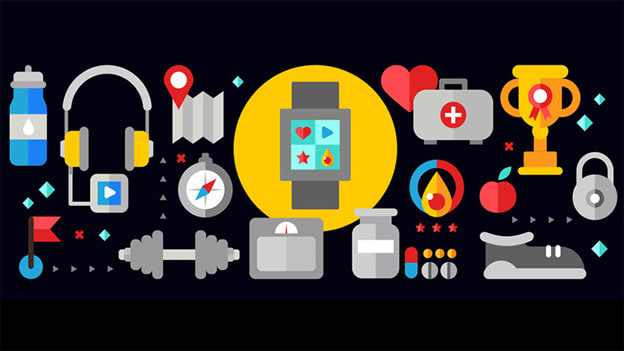How technology empowered HR to tackle emerging wellness needs

2020 saw organizations adapt to new ways of working amidst uncertainty and ambiguity. As the world of work went remote, employees had to cope with new realities, and learn new skills. Employees, managers and leaders rose to the challenge, and HR spearheaded the digital transformation agenda.
Pre-pandemic, employee wellness and wellbeing was still significantly important. But with the rise of remote working, social distancing and the stress of uncertainty, there’s a heightened physical, mental and social impact.
Today, as workers start returning to their workplace, questions about safety and health still loom large. As employers focus on strengthening workforce resilience and supporting a safe physical return to workplaces, they need to make the most of technology.
Technology as a wellness enabler
Today, the business ask is to integrate workers’ physical, mental, financial, and social health into the design of work itself rather than address well- being with ad hoc programs1.
Kavita Kurup, Global Head, Talent and Organizational Transformation, UST, states that, “Technology can empower wellness programs to touch all aspects of wellness from physical to social, financial and mental well-being. In fact, technology played and continues to play a significant role in the paradigm shift of corporate wellness from wellness to well-being”.
Here are some of the leading ways companies are leveraging technology:
§ AI powered support: Employee concerns and intelligent occupational health systems and responses are powered by artificial intelligence insights – which understand the pulse of people and align resources to support them. For example, Chatbots are being used to ‘check’ on employee health and wellbeing – they are also able to align resources that could help them on-demand.
§ Virtual counselling has helped address mental wellness issues during the past few months rising from isolated working and living. It is important to create awareness and remove stigma around counselling, thereby encouraging consumption of such tools.
§ Health and fitness monitors: Digital therapeutics has gained prominence. With online consultations/ virtual healthcare helping employees cope through extended hours of work. Many organizations also organized either virtual yoga or light exercise sessions for employees and their families.
§ Technology powered benefits: Today, HR is empowered to improve the benefits landscape by focusing on personalization, flexibility, and empowerment. “With technology, HR would be able to offer flexible benefits designed to fit the needs of each employee at any given time. Today, HR and employees have the option to work together to define which benefits work best for each individual employee. Indeed, with the right tools, the HR fraternity can prepare their employees for the future of work and its potential health costs’, says Kavita.
§ Online learning helped organizations imbibe job crafting i.e. giving individuals autonomy to make meaningful decisions about what and how they contribute to the organization. A research by Deloitte1 states that, for upskilling and reskilling, the growing prevalence of worker agency and choice during the pandemic showed that, when given the chance to align their interests and passions with organizational needs, workers can fulfil their potential in ways that leaders may never have known they could, positioning the organization to thrive in the long term.
§ Virtual connects has enabled a human connect. It has helped the leadership connect and increased a sense of belonging and inclusion. Digital town halls and team-bonding catch-up, enabled candid conversations. According to a KPMG research5, one of the top ways companies supported employee wellness was through HR e-connect and Leadership calls / connects.
The way ahead for tech-driven wellness
Organizational health trickles up from employee wellness. The actions organizations take or fail to take now will determine their future resiliency, because wellbeing is a strong engagement and retention tool for modern-day employees. Going ahead, wider business transformations are essential to make a lasting impact, and this requires leadership focus.
As Kavita notes, “2021 will see tremendous transformation and acceleration in the introduction of technologies and platforms as the leader’s focus on resilience, well-being, and human centred leadership continue to grow. Technology will allow HR to transform into a consulting enabler to the business. With technology, the HR function can show that they are actively turning wellbeing from a policy into a real commitment, and at the same time empowering their own employees to see workplace wellbeing as a natural part of their employment. The key is to balance technology and empathy, so you strengthen your business and have a lasting impact on employee retention, engagement, wellbeing and productivity. Word on the street is that the design of the future is the hybrid workplace, where HR will leverage technology in the simplification, integration, and design thinking of the digital work experience.”
While technology will continue to provide channels to design interventions, communicate and engage, a human centered approach that promotes workers’ health and safety will be critical for the long-term.
----
This article is a part of #HRReboot Week– The road map to re-opening the workplace brought to you by Oracle and People Matters, that’s focused on building a resilient workplace. Follow #HRReboot to get access to insights and experience from the exclusive conversations we have with a group of leaders who are leading the future of work. Click here to register.
---
Sources / References:
1 Deloitte Report- https://www2.deloitte.com/content/dam/insights/us/articles/6935_2021-HC-Trends/di_human-capital-trends.pdf
2 Gartner Report - https://emtemp.gcom.cloud/ngw/globalassets/en/human-resources/documents/trends/top-priorities-for-hr-leaders-2021.pdf
3 EY - https://www.ey.com/en_gl/covid-19/how-do-you-ensure-wellbeing-is-at-the-core-of-workforce-resilience
4 EY Mental Health - https://www.ey.com/en_gl/health/how-covid-19-reshapes-the-mental-health-needs-of-workers
5 KPMG Report - https://assets.kpmg/content/dam/kpmg/in/pdf/2020/05/cutting-through-crisis.pdf
6 Interview with Kavita Kurup, Global Head, Talent and Organizational Transformation, UST













